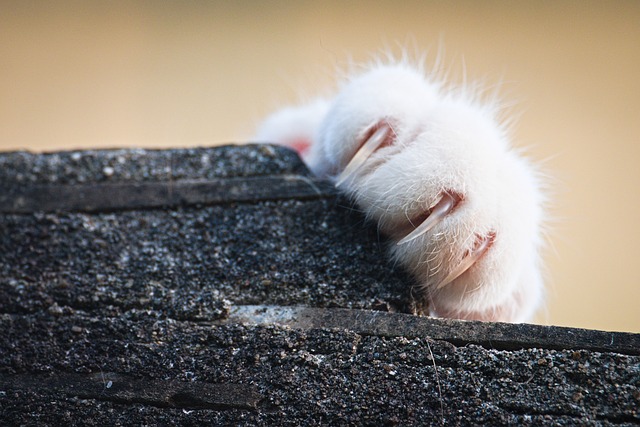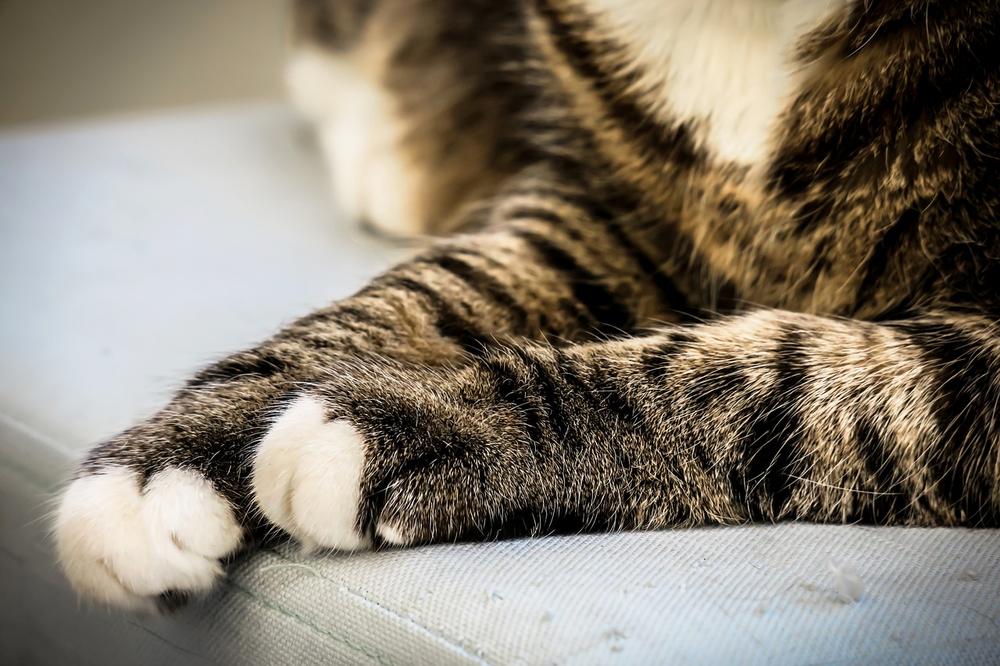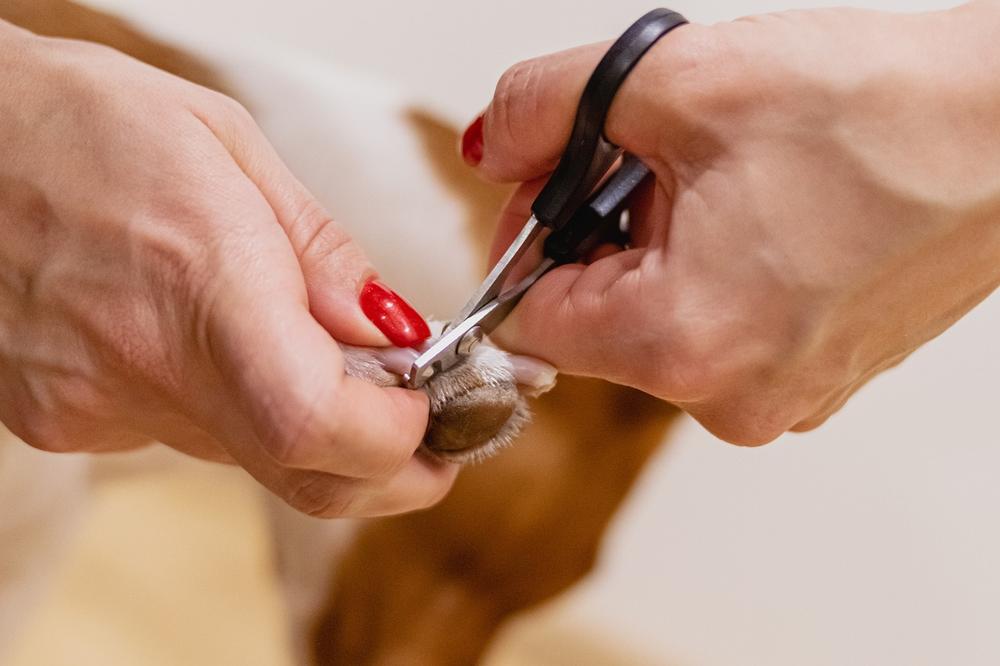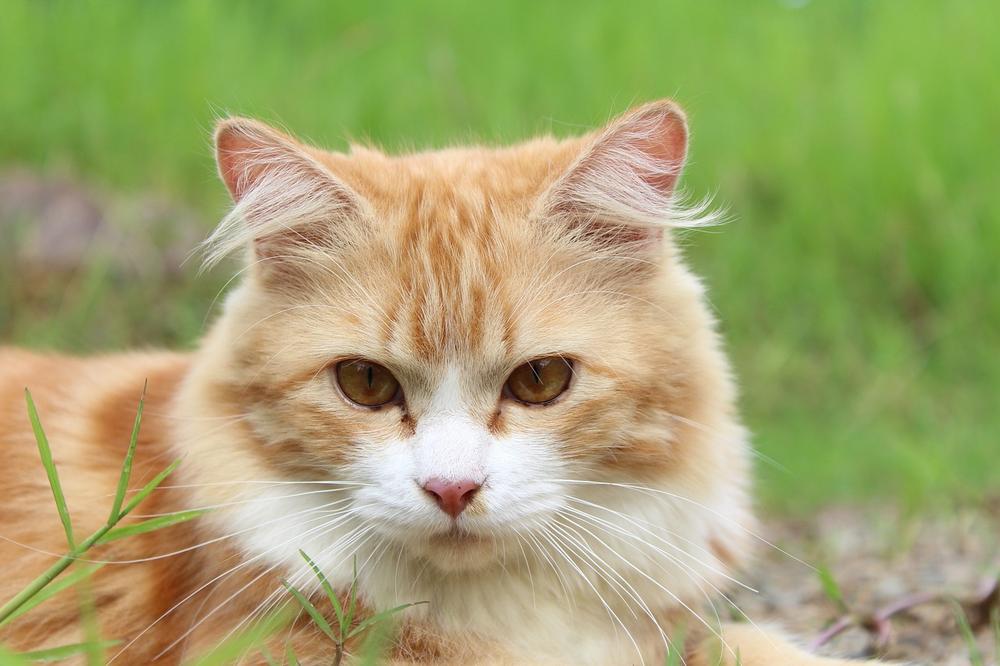Cat Won't Let You Trim Their Nails? Here's What You Should Do!

Want to trim your cat's nails without a battle?
Ever tried to give your cat a pedicure but ended up with scratches and shredded furniture instead? 🐾
I know exactly what you're thinking - "Is there a secret I don't know about? Am I just doomed to suffer forever with those razor-sharp claws?"
Well, my friend, take a deep breath and relax, because you're about to uncover some game-changing tips that will turn your cat's nail-trimming experience from a nightmare into a dream come true.
Hang in there, and let's dive in!
Tips to Help Calm Your Cat While Trimming
When trimming your cat's nails, follow these tips to keep them calm:
- Use sprays or diffusers that mimic their natural scents to set a calming mood.
- Make sure they're comfortable with having their paws touched before you start.
- Trim one or two nails at a time if they start getting anxious.
- Cover their face with a soft towel or blanket to help them relax.
- Begin introducing nail clipping in a quiet room without distractions when they're a kitten.
- Get them used to gentle paw massages and touches for added comfort.
- Stick to clippers they're familiar with, and reward them with treats for good behavior.
- Stay calm and patient throughout the process to create a relaxed atmosphere.
- Create a comfortable and secure environment for successful nail trims.
Successfully trimming your cat's nails is achievable through these actions of taking these measures and establishing a tranquil environment. 😺

For a foolproof method that will keep your cat secure and allow for precise nail trimming, try the burrito technique!
Methods to Restrain My Cat and Clip Its Nails
Here are 11 ways to safely cut your cat's nails:
- Use the "burrito" method - wrap your cat snuggly in a towel or blanket.
- Take it one paw at a time for cutting.
- Choose cat-specific or straight-edged nail clippers, not scissors or human ones.
- Trim the nail's sharp part with care.
- Avoid going too far and hitting the sensitive quick.
- Only clip the white part of the claw.
- Keep styptic powder or soap nearby in case of bleeding.
- Seek professional help if your cat is being difficult.
- Put gentle pressure on the foot pad to extend claws.
- Remember: be careful when cutting and watch out for the sensitive quick!
If your cat resists, get another person involved or wrap them up in a towel or blanket.
Lastly, reward their good behavior with yummy treats! ✨

But what if your cat still refuses to cooperate?
Don't worry, there's a solution that can help ease the nail trimming process for both you and your furry friend.
Keep reading to discover a technique that can make all the difference in your efforts to trim your cat's nails with ease.
Top Tips on How to Trim Your Cat's Nails
Start by getting your cat used to having their paws handled.
Start with short sessions of gently touching their paws, then gradually increase the time.
Make it a positive experience by giving treats and praise.
This helps your fluffy friend feel comfortable with paw-handling.
Create a regular routine for trimming your cat's nails.
Trim every ten days to two weeks to keep their nails at the right length.
Regular maintenance is key to prevent discomfort or injuries from long, sharp nails.
Shorter nails make each trimming session easier for both you and your cat.
Stick to your routine and grab that trimmer!
Stay calm and patient while trimming your cat's nails.
Find a quiet and secure area where you both can relax.
Take breaks if needed and try again later if you feel overwhelmed.

Nail trimming is just one part of taking care of your cat.
Show love and affection before, during, and after the session to build trust.
Positive reinforcement goes a long way in strengthening your bond with your cat.
And finally, when it comes to taking care of your cat, accidents happen.
If your furry friend has ever peed in the air vent, you know the frustration and helplessness that comes with it.
But don't worry, I've got you covered.
Check out my article Cat Peed in Air Vent for a complete guide on how to clean up the mess and restore your home to its fresh, clean state.
You're not alone in this, and I'm here to help every step of the way.
Alternatives to Trimming Your Cat's Nails the Traditional Way
If you're looking for different ways to trim your cat's nails, here are 10 options to consider:
- Give your kitty appropriate scratching surfaces like scratch pads or boards.
- Encourage your cat to naturally file down their nails by scratching on these surfaces.
- Get yourself a pair of cat nail trimmers that are specially designed for small paws and nails.
- Whatever you do, don't even think about declawing - it's harmful and should be avoided.
- If you'd rather not handle the nail trimming yourself, seek professional help from a vet or groomer.
- Keep in mind that professionals might charge you a fee for their services.
- In extreme cases where your cat simply won't tolerate nail trims, sedation may be necessary.
- Have you ever thought about giving it a shot while your cat is fast asleep? It could be worth a try.
- If your cat puts up an excessive fight when it comes to nail trimming, consult a professional for guidance.
- Another option to regular nail trimming is using nail caps or soft covers like Soft Paws.
Playing with your kitty regularly and providing them with scratching posts can also help keep their nails healthy and reduce the need for frequent trims.

If you're feeling frustrated or helpless while trying to get your cat into a carrier, I understand. That's why I recommend checking out How to Get a Cat Into a Carrier. It's a guide full of effective techniques for safely and successfully transporting your feline friend. Trust me, you won't want to miss it!
While there are many alternatives to traditional cat nail trimming methods, you have to understand why cats resist this process in the first place.
As a fellow cat owner, I know that sensitivity and discomfort can play a major role, causing pain or bleeding if mishandled.
Why Do Cats Dislike Having Their Nails Trimmed?
| Reason | Explanation |
|---|---|
| Sensitivity to pressure in their nails | Cats have sensitive nerve endings in their paws, which make them more sensitive to pressure and touch on their nails. This sensitivity can cause discomfort or pain when their nails are trimmed. |
| Fear and anxiety | Cats may associate nail trimming with fear or anxiety-inducing experiences, such as previous negative encounters or unfamiliar handling. These negative associations can make them resistant to having their nails trimmed. |
| Discomfort | The process of nail trimming can sometimes cause discomfort for cats, especially if their nails are overgrown or if they have any underlying paw issues. This discomfort can make them more resistant to having their nails trimmed. |
| Past negative experiences | Cats have long memories, and if they have had a bad experience with nail trimming in the past, they may carry that fear or aversion into future nail trimming sessions. |
| Dislike of having their paws touched | Many cats are sensitive about their paws being touched, which can make nail trimming a challenging task. Cats have a natural instinct to protect their paws and may resist having them handled. Building trust and gradually acclimating them to paw touch can help alleviate this dislike. |
| Lack of patience and trust | Rushing the nail trimming process or neglecting trust-building exercises can contribute to a cat's resistance. Patience and gentle handling, combined with positive reinforcement, can help build trust and make nail trimming a more cooperative experience. |
Hey there cat lovers... Let's talk about why your feline friend hates getting their nails trimmed. Trust me, you're not alone in this battle.
First of all, sensitive nails bring on the pain for our whiskered companions.
They can bleed or hurt if accidentally cut too short during trimming (ouch!).
No wonder they put up a fight.
But that's not all, folks.
Cats like me just don't dig having their paws touched.
It's as simple as that.
So when you whip out those nail trimmers, they might go into full-on resistance mode.
However, don't get discouraged.

Nail trimming doesn't HAVE to be a dreaded experience.
In fact, it can be completely painless.
So why do cats put up such a fuss?
Well, there are reasons abound: fear, anxiety, discomfort, and past negative experiences.
It's no wonder they want to curl up under the couch instead!
The key to success is building trust and exercising patience.
You gotta let them feel comfortable with the whole process.
Cat parents, you got this.
Don't let the occasional scratching session deter you from helping your furry pals stay clean and healthy. They'll thank you in their own mysterious way!
And now, let's talk about the importance of nail care for your beloved feline companions!
I can't stress enough how essential it is to prevent ingrown nails and maintain their all in all nail health...
Why Do We Need to Trim Cats' Nails?
Maintaining your cat's nail health is crucial.
To prevent ingrown nails and ensure their well-being, you should regularly trim your fuzzy friend's nails.
This practice reduces the chances of their claws growing excessively long and curling into the pad—a painful ordeal that might result in infection.
What's more, trimming your cat's nails helps protect your furniture and carpets from unwanted scratching episodes.
You have to remember that long nails can puncture the sensitive pad, leading to infections or injuries.
Therefore, keep an eye on your cat's claws and seek veterinary assistance whenever necessary. Don't underestimate the importance of paw-per care!
Conclusion
- Get your cat used to having their paws touched.
- Cut one or two nails at a time if your cat gets stressed.
- Use a soft towel or blanket to cover their face to prevent anxiety.
- Create a calm environment and provide distractions before starting.
- Introduce nail clipping when the cat is a kitten in a quiet room.
- Massage and touch the cat's paws regularly to increase comfort.
- Use clippers that the cat is familiar with and associate them with treats.
- Remain calm and patient throughout the process.
- Establish a positive association with nail trimming using treats or positive reinforcement.
- Ensure a comfortable and secure environment during the process.
- Avoid using scissors or curved edges, use cat-specific or straight-edged clippers.
- Trim the white part of the claw to avoid cutting the sensitive quick area.
- Have styptic powder or a soap bar on hand for bleeding.
- Utilize two people or wrap the cat in a towel or blanket for easier handling.
- Take one paw at a time and give treats after successful trims.
And that wraps up today's article.
If you wish to read more of my useful articles, I recommend you check out some of these: How to Train Your Cat Not to Bite, How to Socialize a Kitten, Cat Scratching Side of Litter Box, How to Fix Cat Scratches on Walls, and Why Is My Cat So Desperate for Attention
Talk soon,
-Sarah Davis